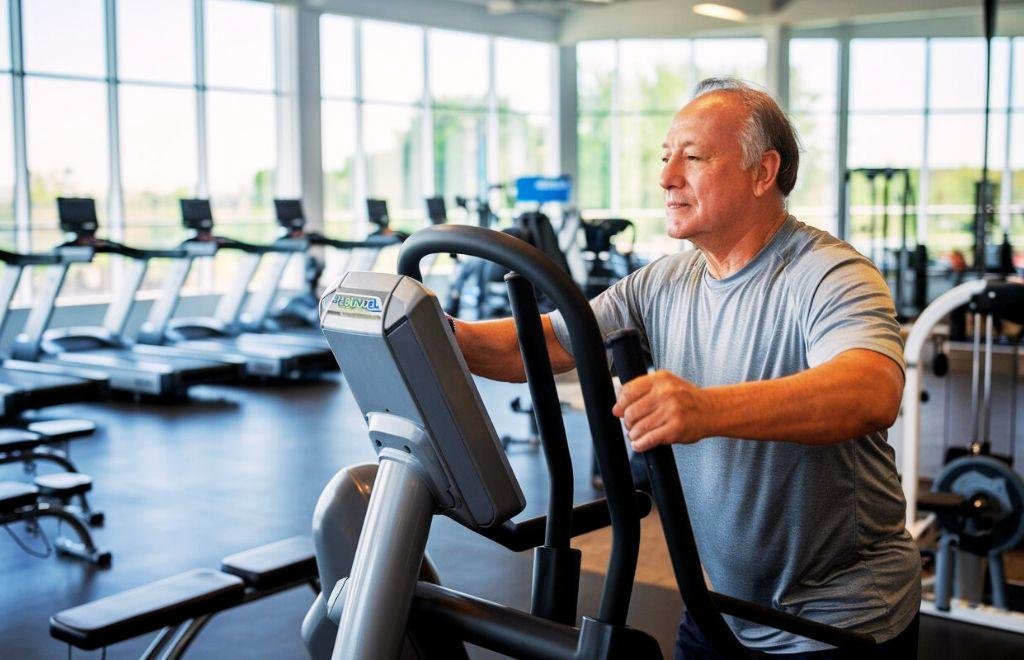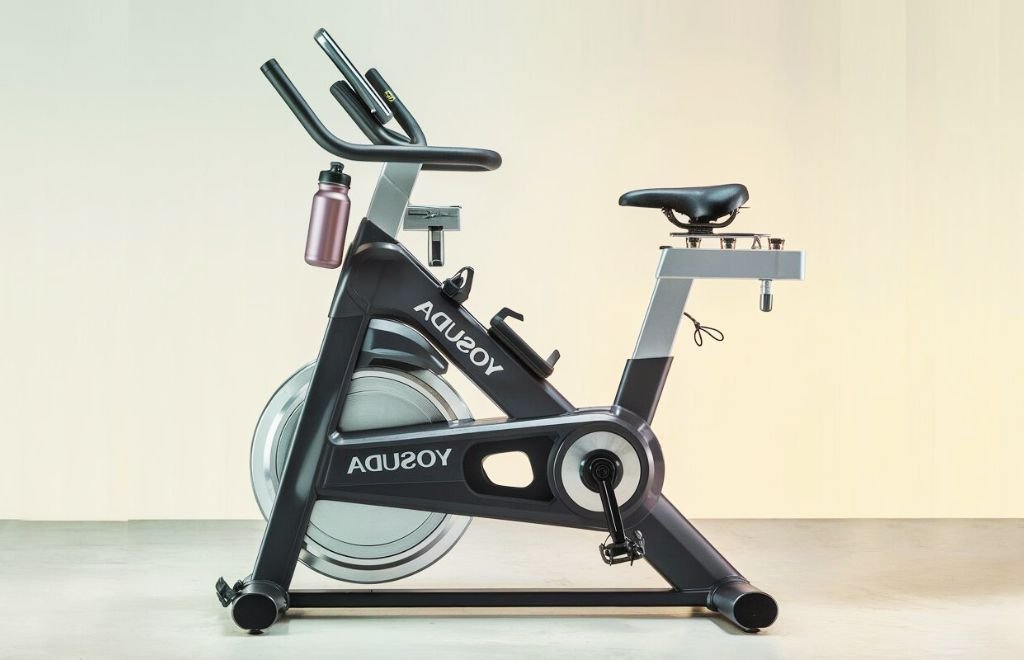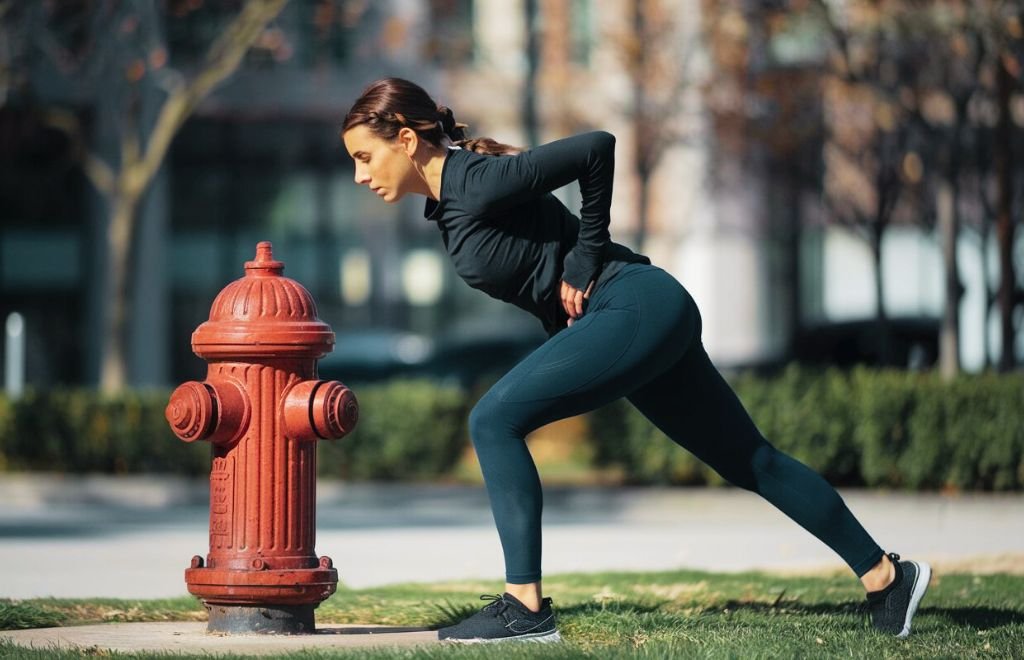Yoga Exercise Mats The best fitness mats are set out before you here.
Having a good Yoga exercise mat can enable those with hectic schedules to make fitness possible whether they are working out at home, at the gym, in a yoga class, on the road, or otherwise.
Yoga Exercise Mats can be your basis for strength and conditioning activities as well as a place to quiet things down for meditation and healing. Still, you should have the correct cushion, space, and texture for your chosen activity regardless of how you use your mat.
Though their variations are subtle, picking the training Yoga Exercise Mats mat best for your tastes will greatly enhance your experience. HIIT workouts need for something with more than 3 mm of padding to cushion your high impact work.
If you practice yoga, you might wish something thinner so you can really feel each position as you flow. To help you stay grounded during your workouts, we have compiled some of our preferred Yoga exercise mats for different uses.
Rogue Individual Mat

Comprising a high-performance athletic foam, the Rogue Individual Yoga Exercise Mats is an excellent foundation for both recovery sessions and strength training.
Yoga Exercise Mats Though its slip-resistant vinyl covering will keep it intact through even the toughest of lifting sessions, its 36 x 72 inch size may be somewhat short for lateral movements requiring a little more space.
Yoga Exercise Mats Arguably one of its coolest features is its roll-up mechanism: the entire mat is composed of foam strips joined to a single piece of material, thus when you roll it up, the mat folds and rolls by strip rather than changing its shape.
Custom Yoga Mat
Perfect size Yoga Exercise Mats for a yoga session or flexibility block, this is 68 inches long by 24 inches wide. Though you will have some padding at 3 mm thick, you will still be able to feel every pose through the mat. It also consists of a textured, non-slip PVC foam to make sure you won’t slide out of downward dog even if the heated yoga class gets somewhat humid.
After you say namaste, the elegant, matte black Rogue Yoga Mat rolls up effortlessly. If you are searching for a Yoga Exercise Mats with a little extra padding, you will discover others out there that are 5 mm or even 7 mm — but naturally, they will sell at a higher price range.
Who should purchase the Rogue Yoga Mat?
Hot yoga devotees looking for a textured shirt to prevent sweat sliding in challenging poses.
Anyone searching for a basic, long-lasting yoga mat – no frills involved.
Consumers seeking a less costly choice may find this mat for just $16.
Yogis who wish a thinner surface so they can yet feel each stance.
Whose Should Not Purchase The Rogue Yoga Exercise Mats
Athletes working their core on their backs that seek a thick mat for comfort.
Folks who want a larger mat they can use for tasks outside of yoga.
If you’re in the market for a basic Yoga Exercise Mats that will keep you balanced and steady when you start attempting more challenging positions, the Rogue Yoga Mat has you covered.
Its textured top coat and Yoga Exercise Mats black finish will have you appearing slick in class and on the streets, all for a reasonable cost.
Yoga Exercise Mats Finer Form Exercise Mat

The Finer Form Yoga Exercise Mat’s anti-slip surface was created expressly to keep exercise equipment (and humans) in place. It’s water resistant as well, hence even if you start sweating on the mat, your stability won’t change during your workout.
Though it’s worth noting that Yoga Exercise Mats the 6-foot length may feel a bit short if you’re big on lateral movements or happen to be as tall as Shaquille O’Neal, it’s 6mm thick and 6 feet long, so there’s plenty of room for all types of strength work, bodyweight HIIT,
Yoga Exercise Mats, and recovery stretches. Once you’re done, just fold this mat up and keep it under the bed or in a closet corner; it’s small enough to squeeze practically anywhere in your home gym.
Who should purchase the finer form Yoga exercise mats?
Athletes who wish a mat to assist a piece of workout equipment and prevent floor damage.
Those who perspire heavily and want a water-resistant Yoga Exercise Mats to prevent slippage.
Those who wish a mat small enough to keep beneath a bed while it’s not in use.
Who Should Not Purchase the Finer Form Yoga Exercise Mats?
Tall athletes who want a bit extra length and lateral motions avoid stepping off the mat in a lateral lunge.
Those seeking a reasonably priced solution — this mat is not the least expensive one available on the market or on this list.
Though you might pay a little more for this mat than others, its non-slip, water-resistant surface guarantees a safe and efficient workout. Furthermore, the 6 mm of cushion surely won’t cause damage to anyone performing pair jump lunges in their HIIT program.
Top Exercise Flooring
Though you might use it for Yoga Exercise Mats a home gym if you are covering a lot of space, exercise flooring is most usually used in commercial training facilities. This selection is perfect for public gyms or group training areas with a few additional elements.
Actives Flooring Regrouping
This mat is one large yoga Exercise mats with nine different color choices. Though it comes in the same thickness choices as yoga mats, it will most certainly be more cushioned than a hardwood floor or tile surface since it is not as cushioned as some comp mats.
This floor is guaranteed to be robust and supportive for many years of athletes visiting your facility since it is composed of recycled tires. Yoga Exercise Mats Just keep in mind that this is not a perfect choice for personal use; its pricing and sizing are designed for larger areas.
Before you purchase an exercise mat think about

From yoga mats to complete padded floors, Yoga Exercise mats cover a vast spectrum of training surfaces; therefore, before you start your search, you must be exactly sure what you are searching for. Before choosing your new exercise mat, be sure you are weighing length, thickness, and texture.
Duration
Individual mats typically fall between 68 and 72 inches in width. Apart from allowing height and lateral motions, longer or shorter is not intrinsically superior than the other. Naturally, you will want to dig up a longer Yoga Exercise Mats if you are really tall or prefer lateral movements for exercise.
More generally, though, the best course of action depending on where the person mat would be used for exercise will probably be educated decision. Try to be sure the Yoga Exercise Mats will be able to unfold completely and that you will have enough room to go from position to position on it wherever you intend to practice.
Regarding flooring and comp mats, the lengths are usually negotiable. To match your fitness facility or home gym, you can decide exactly how long you wish your Yoga Exercise Mats to be.
Although it’s great to be able to select your length, for individual exercise this option isn’t best; in such situation you’ll want something somewhat more maneuverable. Therefore, once again take into account where and most often you will be utilizing the Yoga Exercise Mats to decide what length you will require.
Transparency
The thickness of the training mats is most likely the main differentiator among them. Usually, the thickness indicates the degree of padding it has; thinner has less, thicker has more. While the thinner choices run roughly 3 mm, the thicker end of the spectrum is 5 mm to 7 mm.
Whereas more general workout mats will be thicker to provide greater comfort and support, most mats intended especially for yoga will be on the thinner side.
The type of floor on which the Yoga Exercise Mats will be used, your desired level of support for your joints, and the exercises you will be doing will all determine the proper thickness for you.
While exercising on a hardwood floor may be more suited for thicker alternatives, working on carpets, such a living room or hotel room, will probably not call for the extra padding.
How We Choose the Corrective Action

We wanted to make sure our list suited yogis as well as strength and conditioning athletes as we were building it. Although adaptability was important, before deciding on our favorites we also took into account durability, pricing, texture, comfort, and hardness.
Texture:
Making this list made great difficulty for us as texture is a major factor of safety. Texture gives hold; stability in both HIIT and yoga depends on grip. You run the danger of falling out of a yoga posture or slipping on the mat without a strong grasp when hopping through HIIT motions.
These selections feature non-slip characteristics even if some of them have greater texture than others. You will be getting a product that will keep you safe throughout any movement when slippage is of issue whatsoever mat you decide on from our list.
Cushions
Like texture, which affects safety, cushion also is a factor. Of course, cushion is only good for comfort; but, it also helps to protect your joints, particularly in heavy impact workouts. You should have more cushion on your mat the more time you spend leaping about.
Similarly, if you merely practice yoga, you will most likely want to feel your poses somewhat more and so will not want as much cushion. To choose the suitable cushion for your chosen workout, we have given choices ranging in thickness from 1.25 inches to 3mm.
Pricing
We keep it in mind while creating this list since everyone has different financial situation. For flooring, mats range in price from under $20 at the lower end to over $500. Most personal mats fall between $20 and $100, hence we have included great selections in that range at different pricing ranges.
Although comp mats and floors belong in a completely different category and are far more expensive, we have also provided choices ranging from roughly $100 to that $500 threshold. We have a top-notch choice for you regardless of your budget.
A yoga mat should be convenient to transport, soft and supportive, give enough grip to prevent slipping, and be easy to clean.
We have also carried them about New York City, used them for callisthenic exercises, and soaked them in sweat.
After a fresh round of testing in 2024, the natural rubber Jade Yoga Harmony Mat—long recommended for its durability, comfort, octopus-like grip, and transportability—is now our top choice.
Like most all-rubber mats, it costs more than the mats you might find in most bargain and big-box stores. Long-term testing over years has proved the value of the extra expenditure.
Made completely of natural rubber, the Jade Yoga Harmony Mat is quite effective in absorbing sweat and preserving grip in humid conditions. Though not every yogi will like, it’s somewhat thick at 4.75
millimeters (0.187 inch)—3 to 3.25 millimeters is normally considered acceptable thickness for a first yoga mat—and creates a spongy feel under hand and foot that our testers appreciated. For non-yoga exercises as well, we have found the grip of this mat helpful.
Though it has latex and smells strongly of rubber, the Harmony Mat rolls tighter and faster than conventional mats. If you have a latex allergy, think about our budget choice—the Yoga Accessories 1/4″ Extra Thick Deluxe Yoga Mat or another rubber-free mat we like—the Gairam Performance Dry-Grip Yoga Mat, which we discuss below.
More than only downward dogs or butterfly postures can be accomplished using a yoga mat. For calisthenics or cardio sessions when it provides cushioning and a nonslip basis, it can also be helpful. “We have bony prominences all over our body,”
said Alicia Montalvo, an Arizona State University professor, licensed athletic therapist, injury epidemiologist. You want some kind of barrier there that would act as a cushion. A quality mat should also lower your risk of slipping, so improving your safety while you work on your chosen yoga or workout form.
An exercise mat is all you need whether you have to fit in a workout between meetings or you just want to leave the house to enjoy a nice sweat session. When you’re stretching before a run, working on your Downward Facing Dog, or working out on vacation, the proper one might be rather handy.
First we interviewed professionals—two yoga instructors, a Pilates instructor, and a physical therapist—for their opinions on which essential qualities each one needs to have in order to identify the best workout mats.
Next, in the Very ell Testing Lab, we tested nineteen expert-approved fitness mats from manufacturers including lululemon, Nike, and Gairam. We assessed every mat throughout barre sessions, yoga, weight training, and more.
Our finest picks are chosen and tested with an eye toward lightweight, sweat-wicking, easily cleaned workout mats. While we work out, we take note of the materials each mat is constructed from and how thick it feels under our hands and feet.
Design, comfort, grip, and portability—all of which are criteria—have our final suggestions high marks. Our Review Board also sent a certified personal trainer to check this story for authenticity and review our recommendations for where to buy a thick training mat that will save your joints.
Why We Find Love in It
Our best overall choice is lululemon’s The Workout Mat, an all-purpose, 6-millimeter-thick mat suitable for practically every type of exercise. Have you tried other lululemon mats already? This one is not like others; we observed right away a difference.
We discovered that the rough surface improves the grip of the mat, which helps us to stay on our feet while performing burpees or planks. Not only accentuate the mat’s elegant design but also give support during difficult yoga poses and isometric holds by raised bubbles varying in size and form in different parts of the mat.
Our tester, five feet eleven inches tall, fits nicely on this mat for all kinds of exercises. And under our hands and feet, the thermoplastic elastomer felt wonderfully soft with just enough give during testing.
Furthermore resilient and easy to clean, the mat is stain-resistant and sweat-wicking. From Pilates to weightlifting, lululemon’s The Workout Mat is the most adaptable pick we have tested thus far.
Tips and techniques:
For yoga, does a thick mat make sense?
Not absolutely either. For just comfort, some persons would like a thicker mat. To truly master the motions, though, most of the time you will find yourself wanting to feel each footfall or hand placement when doing yoga. That is more difficult on a thick mat, hence usually you would want a thinner mat for yoga.
Which type of mat will help to avoid slipping most effectively?
You will want a mat with a rough surface if your main worry is about slipping in your sweat during an HIIT or hot yoga session. When things become somewhat slick, textured surfaces give your hands and feet more traction. Although textured mats abound in many materials, generally speaking, if the surface of your mat isn’t entirely smooth, it’s likely textured, and that’s the greatest answer for grip and slipping issues.
For strength exercises, may I use a yoga mat?
Indeed, you can. One can use yoga mats for different kinds of exercises as they are flexible. If you use your mat for HIIT or other high impact exercise, you simply want to be sure they have the appropriate thickness to guard your joints.











